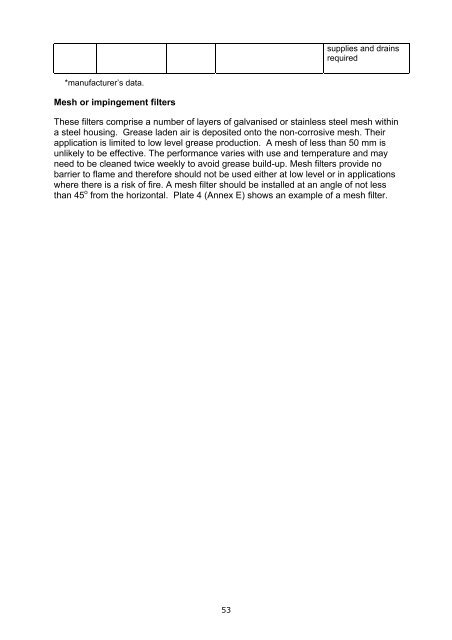Guidance on the Control of Odour and Noise from ... - Defra
Guidance on the Control of Odour and Noise from ... - Defra
Guidance on the Control of Odour and Noise from ... - Defra
Create successful ePaper yourself
Turn your PDF publications into a flip-book with our unique Google optimized e-Paper software.
*manufacturer’s data.<br />
Mesh or impingement filters<br />
53<br />
supplies <strong>and</strong> drains<br />
required<br />
These filters comprise a number <strong>of</strong> layers <strong>of</strong> galvanised or stainless steel mesh within<br />
a steel housing. Grease laden air is deposited <strong>on</strong>to <strong>the</strong> n<strong>on</strong>-corrosive mesh. Their<br />
applicati<strong>on</strong> is limited to low level grease producti<strong>on</strong>. A mesh <strong>of</strong> less than 50 mm is<br />
unlikely to be effective. The performance varies with use <strong>and</strong> temperature <strong>and</strong> may<br />
need to be cleaned twice weekly to avoid grease build-up. Mesh filters provide no<br />
barrier to flame <strong>and</strong> <strong>the</strong>refore should not be used ei<strong>the</strong>r at low level or in applicati<strong>on</strong>s<br />
where <strong>the</strong>re is a risk <strong>of</strong> fire. A mesh filter should be installed at an angle <strong>of</strong> not less<br />
than 45 o <strong>from</strong> <strong>the</strong> horiz<strong>on</strong>tal. Plate 4 (Annex E) shows an example <strong>of</strong> a mesh filter.
















